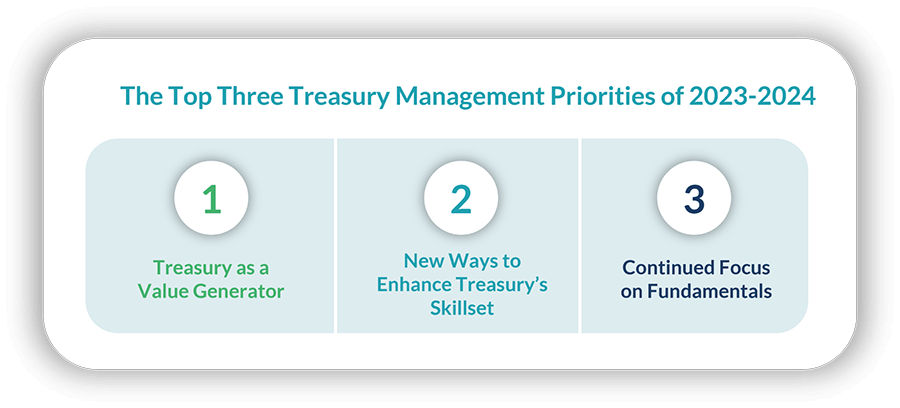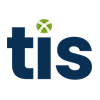Notice: The below article is a variation of a piece originally written by Citi Treasury & Trade Solutions (TTS) and was recently featured in TIS’ inaugural publication of our quarterly magazine. To download and read the full magazine, refer to this landing page: Download – TIS MAGAZINE (tispayments.com).
Setting the Stage: Treasury Management Trends Remain Fluid Post 2020.
Over the last few years, unforeseen challenges have placed a spotlight on treasury management as a critical resource for the firm. As we look towards the second half of 2023, what should treasurers keep in mind as they navigate the future?
2022 was the first year post-pandemic when the world was supposed to return to normal. It began with countries opening, trade picking up, people resuming travel and life beginning to return to a new normal. Then came an increase in geopolitical unrest, trade tensions, supply chain challenges, soaring inflation, rising interest rates, FX volatility and an energy crisis. This defined the backdrop for treasury in 2023 and clearly also shaped priorities this year. Even though we saw a backdrop of many companies starting the year with very positive business projections, allied to a generally constructive macroeconomic outlook, within the first quarter of 2023, we already experienced second-order impacts of the central bankers’ fight against inflation, changing geopolitical dynamics between major world powers, and climate and energy strains. At the risk of recency bias, our take in Client Advisory is that volatility may not subside in the second half of 2023 either, and treasurers may be best off preparing for more stormy weather ahead.
On a positive front, today, many of us work in ways we much prefer to our old office-bound routines. We all read of groundbreaking advances in technology on what seems like an almost daily basis. Closer to home, leading treasurers are taking advantage of new opportunities to support their companies’ revenue growth while ensuring financial efficiency, managing risk, and optimizing capital.
With all that said, we see three top management treasury priorities for 2023 also relevant for the remainder of the year and into 2024:

1. Treasury as a Value Generator.
The pandemic highlighted the importance of having available cash at the right time and at the right place. Treasury was recognized as a critical resource and a trusted partner to the Office of the CFO and the C-suite directly.
This year, leading treasuries should seize the opportunity to embed their roles as value generators by supporting business growth and development. With the dramatic rise in the cost of capital, at many companies the biggest opportunity may be in creating focus on preserving capital and reducing reliance on external funding. A key aspect is improving working capital management and accelerating cash conversion cycles. Since unilaterally delaying supplier payments or trying to forcibly shorten days receivable carries significant business risk, what is needed is a strategic and thoughtful approach that identifies and eliminates inefficiencies across the cash conversion cycle. This is where treasury can create value. It can drive a cash culture across the organization to influence a broader understanding of how liquidity and working capital utilization impacts financial performance. It can help ensure that departments across the finance and business organization understand the impacts of inefficiencies in end-to-end operations impacting working capital needs. And it can be a catalyst for aligning policies, procedures and technology with working capital KPIs, thereby creating discipline on the use of cash.
Each company is unique, and each treasurer is best placed to identify the most material opportunities for their company. Our point is that treasurers should leverage the momentum to become more than a support function and demonstrate the tremendous value-add for firms in engaging treasury across financial and operational decision-making.
2. New Ways of Working & Enhancing the Treasury Management Skillset.
The second theme on the priority list this year is the complex combination of juggling new ways of working with building the future skillsets needed in treasury.
Last year’s top treasury priorities touched on the topic of attracting and retaining talent within the organization. This year, treasury organizations will need to settle on the best ways of remote working in a function that is such an information nexus.
Hybrid and remote working create opportunities, including boosting employee morale and creating the potential for treasury organizations to source the best talent without geographical limitations. Remote working can also create challenges. This can include a loss in productivity if staff are not physically working together and creating synergy off each other’s ideas, and the risk of being exclusionary for those whose personal circumstances are less suitable for remote working. Nevertheless, with the rise in alternative operating models, and hybrid and remote working options, we see a trend toward the treasury workforce increasingly being recruited globally rather than locally. This is where the concept of 24/7 treasury takes on a new dimension to include the element of people.
With the added focus on treasury being a value-generating partner to the business, treasurers also need to build the skills that will be vital for the years ahead. The pace of technology development is heightening the need for tech-savvy treasury staff, with team members at all levels comfortable at deciding how business requirements can be addressed through technology solutions. Skills likely to become increasingly in demand include coding, data science and analytics, AI and machine learning, and understanding system architecture and integration management.
At the same time, softer skills including strategic thinking on their firms’ changing businesses and industry dynamics (and potential demands on and opportunities for treasury), and influencing and communication skills will be important additions to an already complex role, where core finance and accounting competencies remain essential. The challenge for treasury is that these skills are highly desirable and transferable to other parts of the business and across most industries. In an already highly competitive market where attracting and retaining talent is an imperative, each treasurer will need to find the right mix of incentives, flexibility and development opportunities for their organization.
“The choice for treasurers now is how to be more intentional in evolving their function to support their firms’ growth as the world enters a new phase of dynamic change.”
3. Continued Focus on Treasury Management Fundamentals.
The third theme focuses on treasury fundamentals. The market outlook, and even recent attention on counterparty risk, is a reminder that it is as important as ever to ensure the fundamentals are strong. From our engagement at many companies, fundamental areas that still require focus are:
- Cash Visibility & Accessibility
- Liquidity Centralization
- Rationalization of Bank Accounts & Relationships
- Ongoing Treasury Automation
Treasurers can close gaps in full visibility and accessibility of cash by leveraging readily available technology. Multibank reporting is available through many alternatives, including information aggregators. TMS and ERP platforms should be upgraded to support the newest connectivity, including APIs and SWIFT connectivity. It is also a good time to evaluate existing cash centralization and pooling structures if this has not been done for a period. The goal should be to optimize liquidity globally by maximizing the participation of legal entities, countries, and currencies within the limits allowable by regulations.
Even enhancing intraday liquidity management — for example, leveraging recent advances in open banking and instant payments to concentrate cash faster from local collections banks — helps both liquidity management and counterparty risk management. It may also call for looking again at regulated markets. Historically, many companies left Emerging Markets out of pooling structures due to FX and capital controls. The reality is that regulations evolve, and many markets become more flexible as part of the effort to attract FDI. Liquidity optimization should be treated as a continuous process of assessing changes in the company’s operating business, regulations, and tax considerations. This leads to reviewing bank account structures to rationalize and simplify where accounts no longer serve a strong business purpose. By adding KPIs along with rationalization, treasurers can actively work to reduce the number of banks and accounts — lowering cost, risk and operational complexity.
Finally, treasurers should vigorously pursue opportunities to automate manual tasks. Automation is critical to reducing people-dependency and ensuring end- to-end efficiency in centralization of cash for intercompany funding, paying down debt, or investing to take advantage of higher interest rates. Upgrading systems and automating processes helps treasury organizations free up resources, reduce risks, and avoid process redundancy.
Treasury Management Watchlist – ESG.
Environmental, Social, & Governance priorities (ESG) remain of interest to many treasurers. Based on data from Citi Treasury Diagnostics, our global benchmarking survey, for 70% of companies ESG was extremely, very or moderately important. However, only 20% have treasury KPIs associated with ESG objectives. With the introduction of Scope 3 emissions and reporting standardization, we believe that ESG will be one to watch in the future for treasury with a potential shift in focus from E to G.
Aftermath: Treasurers often see themselves as risk managers, assessing all scenarios to identify and set a path to risk mitigation. The disruptions of recent years have given them new opportunities to create significant value for their firms. We noted that leading treasurers are adopting a broader outlook — supporting their companies’ revenue growth, as well as ensuring financial efficiency, managing risk, and optimizing capital.
Has the time now come for all treasurers to stake this new ground?
ABOUT THE AUTHOR: Citi Treasury and Trade Solutions (TTS) Client Advisory.
Citi Treasury & Trade Solutions (TTS) Client Advisory helps Citi’s clients progress treasury practices and evolve their corporate treasury functions to support enterprise growth and transformation. Comprised of former treasury and finance practitioners, the team is located at Citi hubs around the world.
This article is a slightly amended version of a blog originally published by Citi in June 2023, and was originally featured in the TIS magazine. To download the full magazine and read all associated articles and periodicals, refer to the below landing page: Download – TIS MAGAZINE (tispayments.com).[/vc_column_text][/vc_column][/vc_row][vc_row][vc_column][vc_empty_space height=”128px”][/vc_column][/vc_row]



